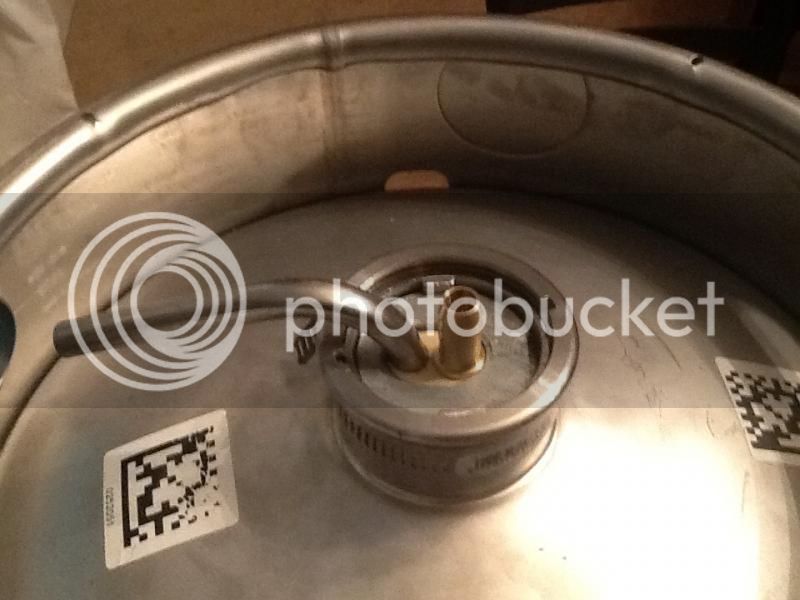Can someone offer a guideline to when/how much to build pressure? Do you start it at 1psi and turn it up 1 psi a day? Do you let it go a few days before building it up beyond 1 psi?
Also, How full can you fill a corny with this method? 4.5 gallons out of 5 for example?
I have one of those McMaster-Carr valves; 99045K44 Adjustable Pressure-Maintaining Plastic Relief Valve, 1/8 NPT Female, 0.5-30 PSI
... so that is what I mean when I say (1 turn) for example...
There are many different temperature/pressure schedules, but here is what I did last time.
Fermentation Temperature and Pressure schedule:
Pitched: 7-16-2013 at 10:30 AM
Day 1 (0 - 12 hours) - 3 PSI @ 65 F
Day 1 (12 - 18 hours) - 4 PSI @ 65 F
(turned knob 1.5 turns)
Day 1 (19+ hours) - 7 PSI @ 65 F
Day 2 - 7 PSI @ 65 F
Day 3 - 7 PSI @ 65 F
Day 4 - 7 PSI @ 65 F (10 Brix)
Day 5 - 7 PSI @ 67 F (9.4 Brix)
Day 6 - 7 PSI @ 67 F (8.7 Brix)
(turned knob 2.5 turns)
Day 7 - 12 PSI @ 71 F
Day 7 - 16 PSI @ 71 F
(turned knob 2 turns)
Day 8 - 20 PSI (estimated)
Day 13 - 19.5 PSI
7-29-2013 8.7 Brix
(turned knob 1/2 turn, to determine if pressure will increase)
Day 14 -
(turned knob 2 turns)
Day 15 - (estimated as crash chill day)
Day 16 - started crash chill
(pressure was 21.5 psi @ 71 F, 1.74 volumes of CO2)
Day 33 - pressure transferred to serving kegs
(pressure was 10.0 psi @ 33 F, 2.63 volumes of CO2)
OG: 1.068
FG: 1.016
Apparent Attenuation: 76.5%
ABV: 6.8%
Also, fermenting in a corny, you can generally get by by filling it up to the welded seam, that is 4.88 gallons or 1 quart less than 5 gallons, and add your Fermcap-S and try to get to 7 psi after the first day (4 psi might do it too).
I would say that most of us use some method of trapping any blow off from getting into our spunding valve, some use clear water filter housings.
And a BIG WARNING, use a hop spider to contain those pellet hops, hops will block the poppets and build up extreme uncontrolled pressure.







































![Craft A Brew - Safale BE-256 Yeast - Fermentis - Belgian Ale Dry Yeast - For Belgian & Strong Ales - Ingredients for Home Brewing - Beer Making Supplies - [3 Pack]](https://m.media-amazon.com/images/I/51bcKEwQmWL._SL500_.jpg)






















